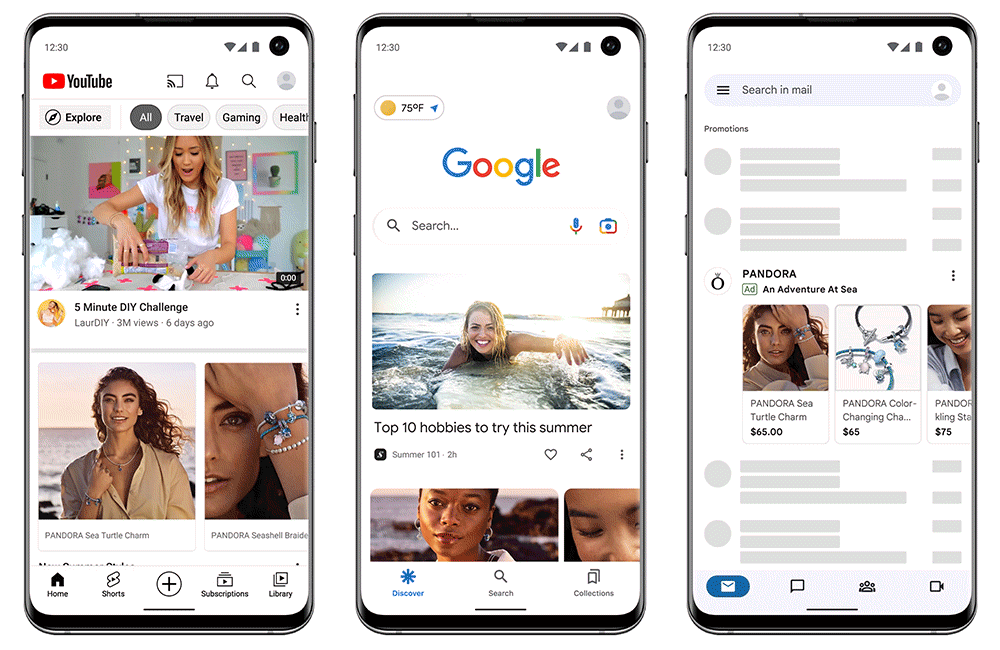3 new Google Discovery ads features
Some brands are recording a 94% increase in sales from prospecting customers, with a 28% year-on-year increase in return on ad spend, Google says.
Google Discovery ads have been updated with new features to help brands stand out on our most engaging ad surfaces, including
- Product feeds that spark audience interest
- Product-level reporting and data-driven attribution
- Measure incremental impact through Conversion Lift experiments
New, engaging layouts & product feeds. Advertisers can leverage various layouts, such as carousels, square, and portrait, to create more compelling and impactful ads.
With this feature, advertisers can display products to consumers based on their interests and intent. Retailers can use lifestyle images and concise text from their Google Merchant Center catalog to deliver more relevant ads.
According to early tests, including product feeds in Discovery ads with sales or lead generation objectives can result in an average of 45% more conversions at a similar cost per action, Google says.

Updated reporting and measurement. Later this month, advertisers will be able to utilize product-level reporting to track the performance of their Google Merchant Center catalog items in product feeds based on metrics such as impressions or clicks. This means that retailers who are promoting a diverse array of products will be able to discern which types of products are generating more interest and take relevant business-related actions.
Beginning in Q2, Discovery advertisers will be able to obtain a more precise understanding of their campaign performance in the Google ecosystem through data-driven attribution (DDA). DDA credits conversions based on how individuals interact with your ads and employs your account data to identify which campaigns are having the most significant impact on your business objectives. You can then utilize this information in combination with automated bidding strategies like Max Conversions to generate even more conversions.
Advertisers who switch to data-driven attribution from other attribution models generally see an average increase of 6% in conversions, Google estimates.
Conversion Lift experiments. To accurately assess the effectiveness of campaigns, Google introduced Conversion Lift experiments last year. This is one of their most recent measurement solutions that enable advertisers to determine incremental conversions based on either users or geography.
“For advertisers who are running both Discovery ads and Video action campaigns, you can use Conversion Lift based on geography to measure their impact together. Reach out to your Google account representative to learn how you can participate.”
Dig deeper. Read the announcement from Google.
Why we care. These new tools can help to optimize your ad campaigns more effectively. By utilizing product-level reporting, advertisers can identify which products are driving more interest and take action accordingly. Data-driven attribution helps to accurately measure the impact of ad campaigns on business objectives, while Conversion Lift experiments provide insights into the incremental conversions generated by their campaigns.
Contributing authors are invited to create content for Search Engine Land and are chosen for their expertise and contribution to the search community. Our contributors work under the oversight of the editorial staff and contributions are checked for quality and relevance to our readers. The opinions they express are their own.
Related stories
New on Search Engine Land